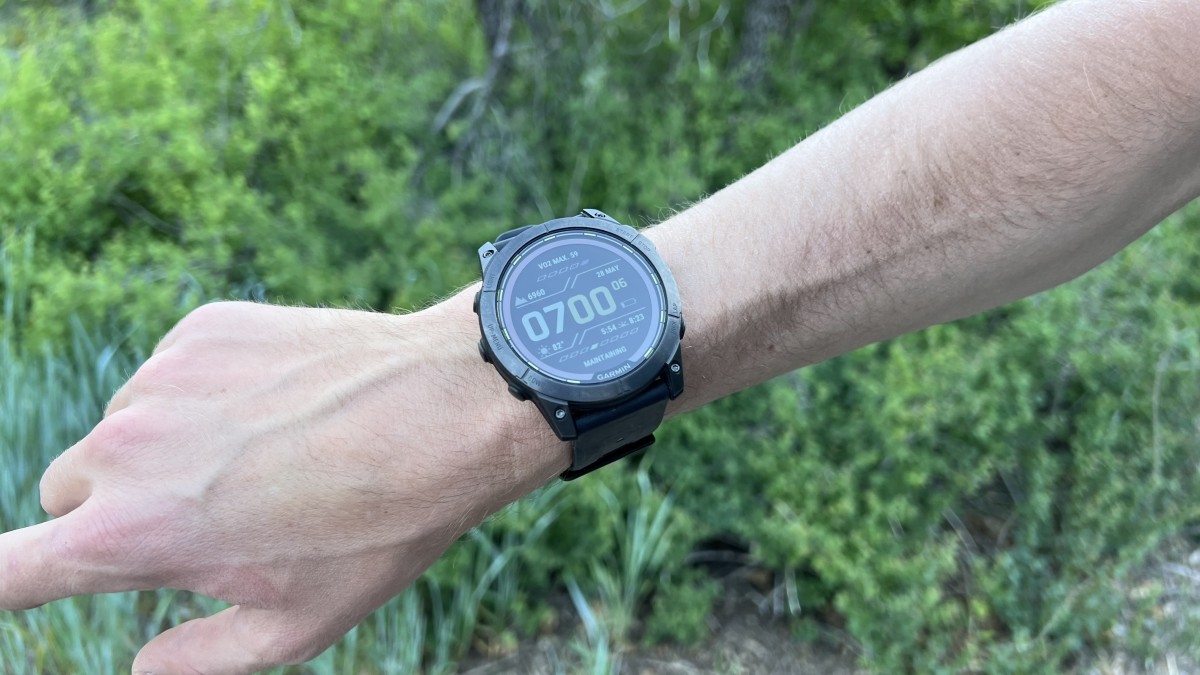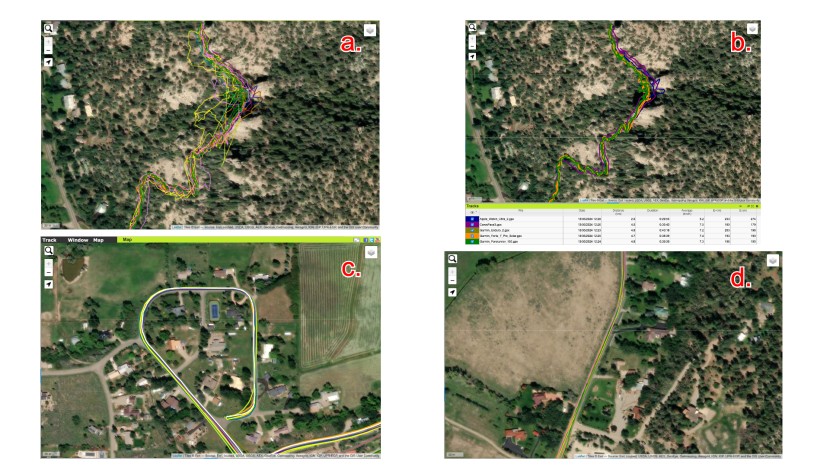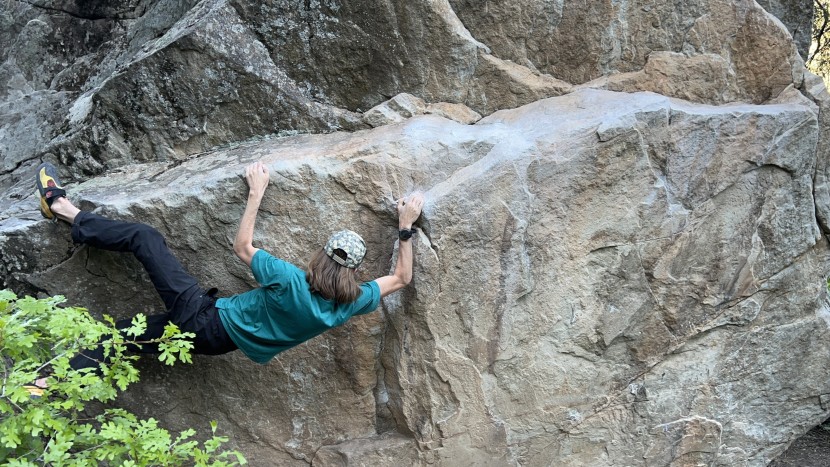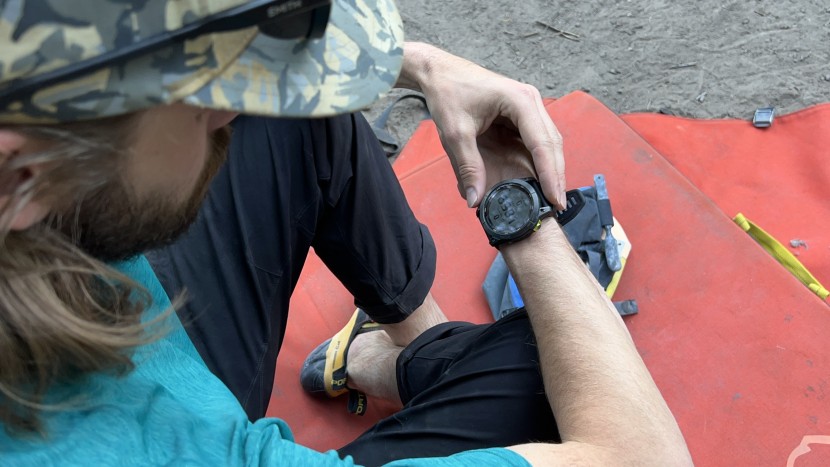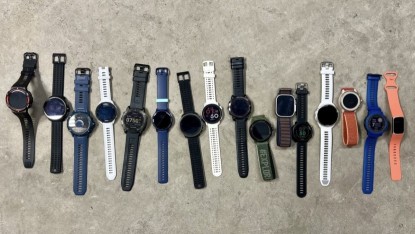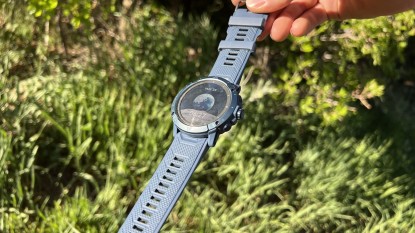Our Verdict
Our Analysis and Test Results
If you like the Garmin ecosystem and battery life is your top priority, this is a great option for you. The Enduro 2 is large, but we were surprised by the wearability of the model; the wider straps actually make the model just as comfortable as the smaller 47mm cases. The larger screen fits more data and reduces the need to switch through data pages. The dedicated flashlight is one of our favorite new features, and personally, we wouldn't buy a new watch without one. The sapphire screen prevents scratches and looks clear in a wide variety of weather conditions. If you're deciding between the Enduro 2 or Fenix series, we suggest determining based on battery life needs.
Accuracy
Our accuracy assessment involved evaluating the GPS chipset and heart rate sensor through rigorous testing methods. To evaluate GPS accuracy, each watch underwent a standardized 2.8-mile course, and the recorded distances were compared against the full course length. We wore a watch on each wrist while running a 0.5-mile distance for heart rate assessment, comparing their readings with those of a Polar H10 chest strap, renowned for its scientifically validated accuracy.
All GPS testing happened on the same day to maintain likely comparable weather conditions for each watch, while for heart rate monitoring, the watches were equally secured to maintain a standardized fit. Timestamped data were meticulously collected and analyzed to facilitate a fair comparison between the chest-worn heart rate monitor and GPS watches.
The Enduro 2 scored well in both GPS and HR accuracy, +/- 2.3 BPM and +/- 0.01 miles, making this one of the most accurate GPS tracks during our testing. While it doesn't have the latest HR sensor from Garmin, it does have multi-GNSS capabilities for added accuracy. During our testing, we found that the standard GPS across all watches performs well in most scenarios.
Activity Use
For long adventures and expeditions, our go-to is the Enduro 2. The 51mm case size is excellent at displaying a lot of information without having to go through different data pages. The navigation on the larger screen also looks better. Much of the topos are pre-downloaded, which we like. The ability to use both the touchscreen and dedicated buttons allows for easy access in a wide variety of conditions. The MIP display also looks great in direct sunlight, and the solar charging allows us to stay out even longer.
There is a lot of overlap in the Garmin lineup, so it can be difficult to decide what to choose. We think this is a great activity-focused watch in Garmin's lineup. We really can't recommend this model unless you are a serious athlete or simply want the biggest and best. With over 100 hours of battery life, there isn't any trip the Enduro can't handle. Having one less thing to charge and worry about is a blessing on expeditions where simplicity and weight matter most. There are a variety of activity modes and metrics to choose from, all of which can be found on the Garmin product page. During our test, we extensively used the trail running, hiking, and biking modes.
Everyday Use
The UI of nearly every Garmin model largely acts the same with minimal difference between them. Each has daily health tracking and sleep recording. This allowed us to keep in touch with our activity levels throughout the day and offered helpful statistics such as body battery and stress. Take the metrics with a grain of salt, as they are based on the accuracy of the HR monitor. The mobile Garmin Connect companion app recently got an upgrade, and some of the UI design was adjusted, making it easier to use and less cluttered. Our team has long complained about this, so we are happy with this redesign.
Linking and pairing your phone will allow you to add options like find my phone or find my watch, which is helpful if you've misplaced the item. We like the remote control music feature, which allows full control of music, allowing you to stop/play directly from the watch without going into your phone. Notifications are also available, and plenty of settings ensure you aren't interrupted if you don't want to be. Sleep mode is great for dimming the display and ensuring notifications don't interrupt your sleep. With Garmin's dedicated buttons, there is always the ability to add hotkeys, which makes accessing different screens very useful. We like having one for the flashlight and one for the alarm page.
Extra Features
This is one of Garmins most exceptional models, so you can expect all the extra software features. There are many different health metrics and scores not found on other units, which can help give you insights into your training. Items like endurance score, hill score, and body battery are great features not found on other units. Other items include Garmin Pay, a dedicated flashlight with red mode, and tons of widgets to choose from.
Garmin has a well designed UI for accessing these features. The toolset and glances allow easy access to settings and on-screen data. You can also access the Connect IQ store, which will allow for 3rd party applications and watch faces. While this sounds appealing, we honestly haven't found any useful apps that make our usage better. There is also an included temperature sensor, which, when removed from your wrist, will give you accurate ambient air temperature; this is nice for checking the daily highs and lows at camp.
Wearability
The 51mm case size will be a non-starter for some, but we are pleasantly surprised by the comfort of the unit. While heavier than some other models, the Enduro 2 has wider straps, which helps make the model sit well on the wrist. We found that the 51mm case design fits the best on our wrist; the wider straps hold the wrist well and prevent any side-to-side rotation when moving our arms. The larger unit is obviously heavier; therefore, it's a noticeable difference, especially when you swing your arms while running. For running, this model may feel a bit overkill, especially when compared to lighter models.
The dedicated buttons on the Garmin Enduro 2 allow for easy navigation and reduce the need for a screen lock, so it's better if you plan to wear it under a jacket. The straps are removable, and there are many other options to choose from. A loop band is also provided, but we prefer the standard clasp design. Because of the MIP display, you don't need to worry about the display turning off, and it's always readable at a wide range of viewing angles. The Enduro 2 watch face is unique in the Garmin lineup, and it's one of our favorites, offering a simple time screen and data without being data overloaded.
Battery Life
We measured the battery life of GPS recording at 108 hours without additional solar charging. If you are planning on being away from a plug for weeks at a time, this is a great model for you. With this amount of battery life, there really isn't an event you can't tackle. We go weeks without charging, even with normal GPS usage of roughly an hour a day.
Should You Buy the Garmin Enduro 2?
The Enduro 2 is one of the most expensive watches in our lineup, so it's probably not for most people. However, serious athletes should consider this model. The battery life is incredible, and the 51mm case is rugged and fits well despite being so large. With sapphire crystal, you can be assured the glass will look good for years to come.
What Other GPS Watches Should You Consider?
Another great watch that competes with the Enduro 2 is the Garmin Fenix 7 Pro Solar. The Fenix 7 Pro Solar is newer and contains all the latest Garmin sensors, notably their most recent HR monitor. For comparable battery life with a lower price point, check out the Coros Vertix 2s.


